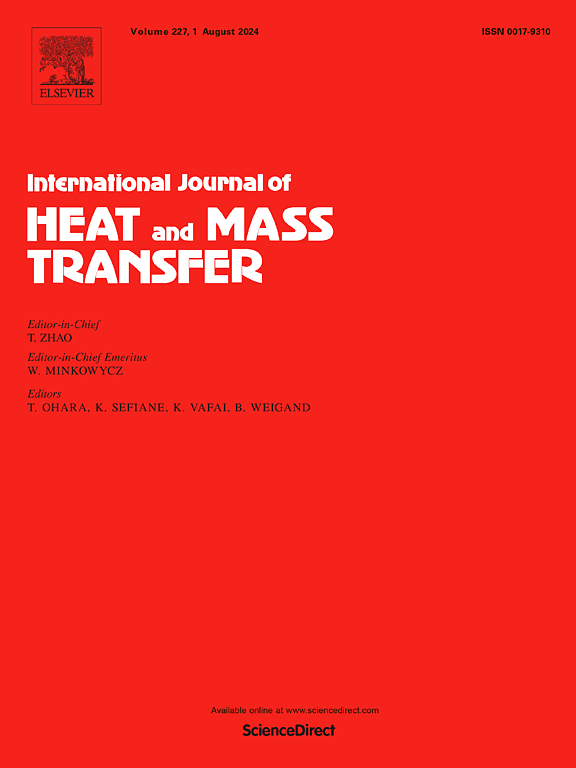Experimental study on the flame characteristics of ceiling jet with various air entrainment conditions and vertical fire positions
IF 5.8
2区 工程技术
Q1 ENGINEERING, MECHANICAL
International Journal of Heat and Mass Transfer
Pub Date : 2024-11-29
DOI:10.1016/j.ijheatmasstransfer.2024.126467
引用次数: 0
Abstract
This paper presents an experimental investigation into the impact of varying the location of the fire source within a tunnel on the temperature and morphology of the ceiling jet in different directions. It proposes a method to predict the longitudinal and transverse flame length based on previous studies about flame morphology. The experiment is conducted on a reduced scale (1/8th) tunnel, with the fire source being a porous gas burner utilizing propane as fuel. It comprised two series of transverse fire source locations (against the wall or at the centerline of the tunnel). Each series included five heights, ranging from 0 m to 0.4 m, and 12 heat release rates, spanning from 5.67 kW to 85.10 kW. The results of the experiments demonstrated that elevating the fire source or positioning it against the wall facilitated the formation of ceiling jets. The limited transverse space of the tunnel leads to greater constraints on the transverse ceiling jets, resulting in a longer longitudinal ceiling jet than a transverse ceiling jet. And the longer longitudinal ceiling jets simultaneously result in a higher longitudinal temperature distribution under the ceiling. This study proposed the effective HRR Qef based on the assumption of a constant heat release rate per unit flame volume to analyze the flame length. And the dimensionless flame length Lf/D has been found to scale with the dimensionless effective HRR Qef⁎ by the power of 2/5. This correlation is further validated by comparing it with the previous experimental data.
不同带风条件和垂直火场下顶棚射流火焰特性的实验研究
本文研究了隧道内不同火源位置对不同方向顶棚射流温度和形态的影响。在前人火焰形态研究的基础上,提出了一种预测火焰纵向和横向长度的方法。实验在缩小尺寸(1/8)的隧道上进行,火源为多孔气体燃烧器,以丙烷为燃料。它包括两个系列的横向火源位置(靠墙或在隧道的中心线)。每个系列包括5个高度,从0米到0.4米,12个热量释放率,从5.67千瓦到85.10千瓦。实验结果表明,将火源抬高或将火源靠墙放置有利于天花板射流的形成。隧道有限的横向空间对横向顶棚射流的约束较大,导致纵向顶棚射流比横向顶棚射流长。纵向顶棚喷流越长,顶棚下纵向温度分布越大。本研究在单位火焰体积放热速率恒定的假设下,提出了有效HRR Qef来分析火焰长度。发现无量纲火焰长度Lf/D与无量纲有效HRR Qef成2/5的倍数。通过与以往实验数据的对比,进一步验证了这种相关性。
本文章由计算机程序翻译,如有差异,请以英文原文为准。
求助全文
约1分钟内获得全文
求助全文
来源期刊
CiteScore
10.30
自引率
13.50%
发文量
1319
审稿时长
41 days
期刊介绍:
International Journal of Heat and Mass Transfer is the vehicle for the exchange of basic ideas in heat and mass transfer between research workers and engineers throughout the world. It focuses on both analytical and experimental research, with an emphasis on contributions which increase the basic understanding of transfer processes and their application to engineering problems.
Topics include:
-New methods of measuring and/or correlating transport-property data
-Energy engineering
-Environmental applications of heat and/or mass transfer

 求助内容:
求助内容: 应助结果提醒方式:
应助结果提醒方式:


